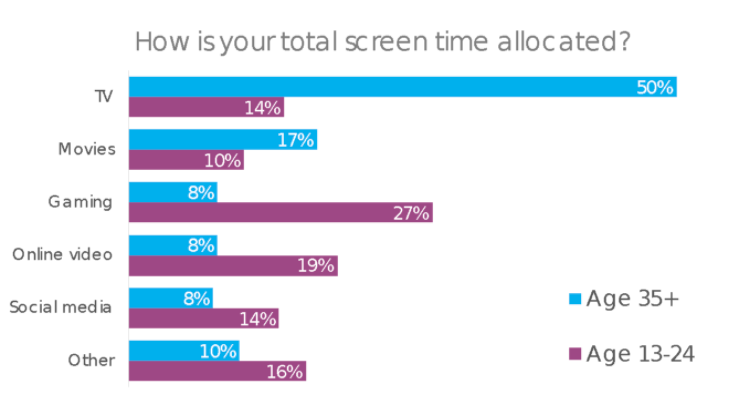Content Still Connects People -- But Increasingly, That Content Isn’t on TV
To-date, disruption of the entertainment industry has revolved around platforms, as streaming replaces ad-supported live viewing among many viewers. But what if there’s an even bigger disruption underway – a fundamental change in what “watching TV” even means?
One reason we love TV is that it’s a cultural touchstone: an interest we share and talk about and remember. Like many Gen Xers, even in the age of peak TV no one had to sell me on re-watching The Fresh Prince or Friends: the connection formed years ago is still there.
So, it’s all the more important that the next generation of viewers are connecting around other kinds of content, in a way that seems likely to reshape entertainment sooner than we think.
“YouTubers”: In Hub’s annual “Video Redefined” study…
13-24 year-olds say they spend as much time watching non-premium online video as they do regular TV shows on any platform
More than 75% say they’ve bought a product endorsed by a YouTuber
66% say that YouTuber endorsements carry more weight in their decisions than a TV commercial.
Gaming: Young people say they allocate more of their total screen time to playing games (27%) than to TV shows and movies combined (24%).
More than half watch› gaming videos on YouTube, and more know who PewDiePie is than LeBron James
More than 40% said that most of their communications with friends, on any topic, happens inside a game.
Perhaps it’s no surprise that during the pandemic, gaming industry revenue rose to $180 billion – more than U.S. sports and movies, combined.
In 2019 Reed Hastings said, “our focus is not on Disney+, Amazon or others, but on how we can improve our experience. We compete with (and lose to) Fortnite more often than HBO.” The entertainment industry must recognize that this is a cultural shift and not just a behavioral one. These consumers will get older, and their lifestyles and disposable time and income will change. But the cultural connections they are forming right now will stick. A plan to accommodate – or better yet, leverage – the kinds of content that form them will be important long after the dust from the “streaming wars” has settled.



